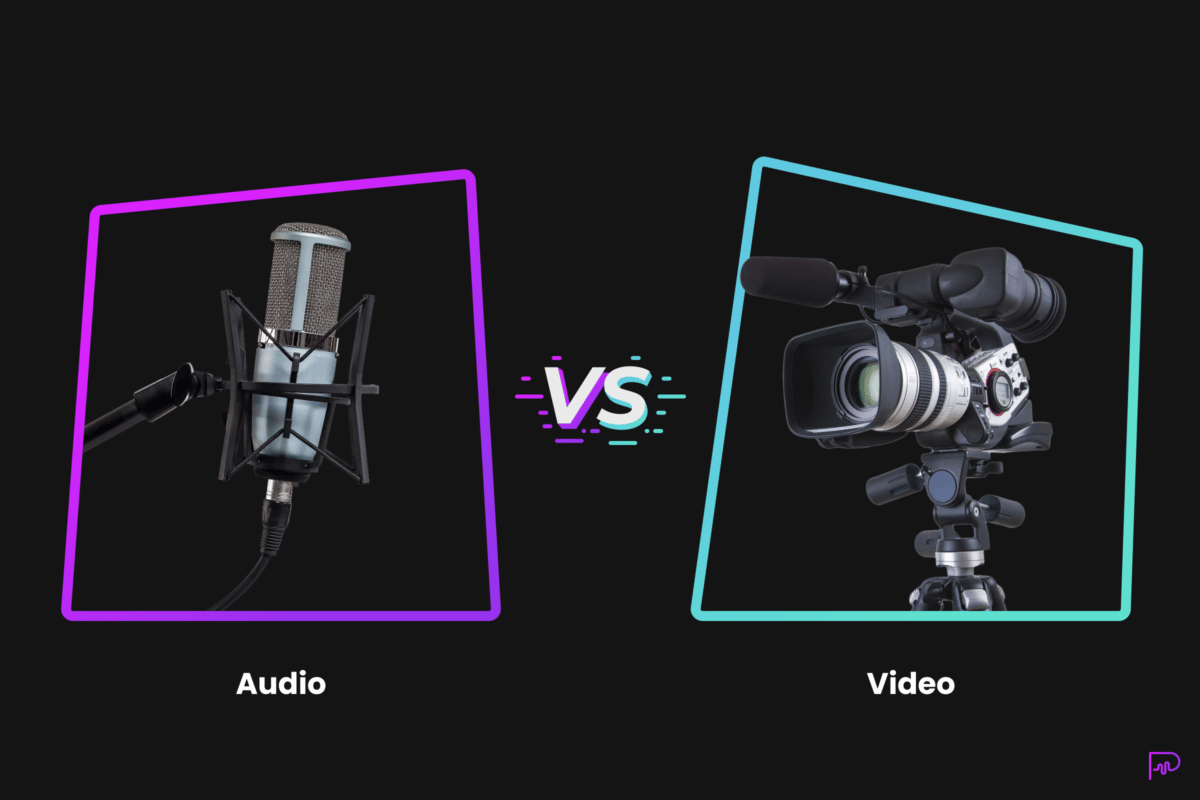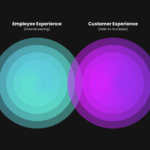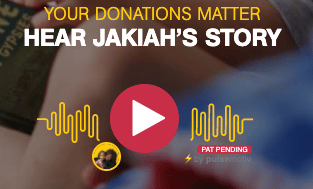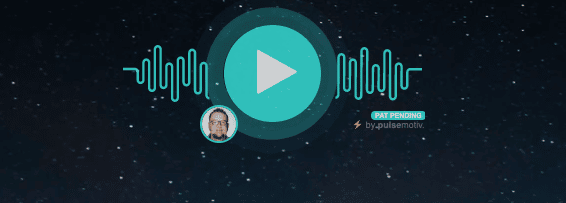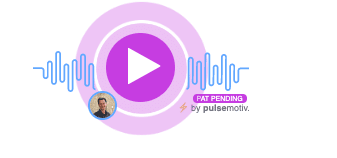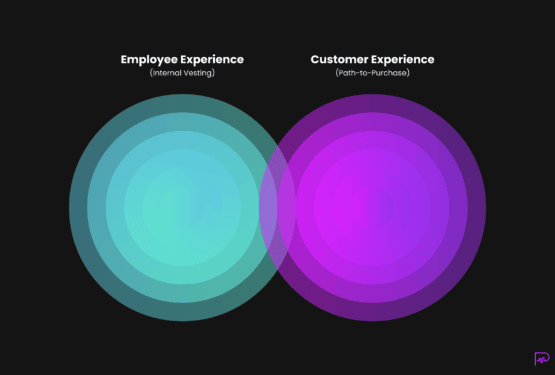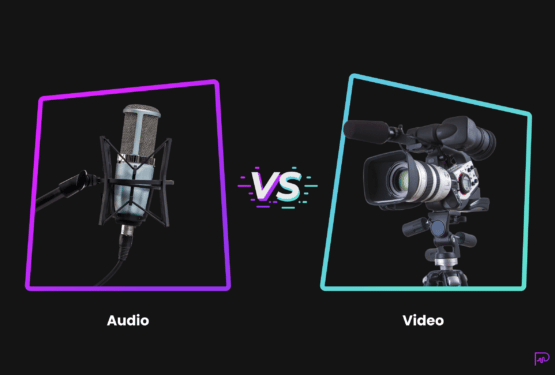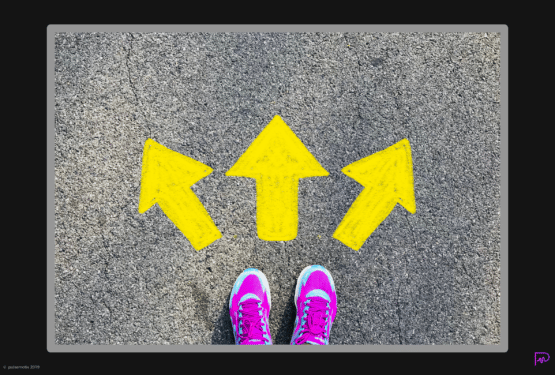For the past decade I’ve been entrenched in the content marketing world, and more recently I’ve seen a tremendous uptick in the debate between audio versus video marketing. Which is better? Which converts more casual viewers into customers online? And which is most effective at forming a genuine relationship with potential buyers via something as distant and cold as a landing page?
On the side of the avid audio fans, you’ll find dedicated podcast listeners who love being able to listen without being forced to watch. This on-the-go value audio brings people closer to your brand no matter where they are in their daily lives — whether driving, walking, or just cooking dinner in their kitchen. Though all of these scenarios work well for people to consume content through audio, the same situations wouldn’t be as possible (and might even be a tad dangerous) via video.
But, in the opposite corner are those fighting for video. Their argument is loudly in favor of imagery and non-verbal cues which add dimension audio just can’t replicate.
Yes, the benefits of video can’t be overlooked. We get it. We have a YouTube channel of our own. Video lets you tap into both the sight and sound senses. You can show facial expressions while letting your visitor hear your voice. You can use non-verbal cues to connect deeper with your prospective buyers and current customers. You can also use imagery to display information or give instruction. It sounds like a no-brainer except…it’s not. In this post, I’m going to show you (and test you to prove it) a few of the reasons the brain reacts differently— and more quickly— to sound over visual cues.
The Human Brain Reacts Differently to Audio Versus Video Marketing
To illustrate this point, let’s look specifically at the human brain and how it reacts when audio and visual cues are sent. Full disclosure, I’m not a neuroscientist and I know there is an entire world happening between our ears that we’ve barely even begun to fully understand. I will never claim to know everything there is to know about what happens in our heads because much smarter people than I are still unravelling those wild mysteries. Still, there is a ton we can learn from modern medicine. Understanding how the senses work together is just one example of where research has caused many people to pause and question assumptions about how our senses interact. Understanding the shift people go through after hearing loss is just one example.
When people experience hearing loss, one of the biggest challenges they experience is the effect on situational awareness. Studies on hearing in daily life show that acoustics, competing signals in the room, and linguistic context are lost when sound is muffled or nonexistent.
The lack of audio in a digital world can often lead to similar challenges. Without knowing who’s “in the room” with you, what’s happening around you, or the context in which the message is being delivered, you’ll have a harder time understanding what to look for, what to pay attention to, or where to go next.
We’re not the only ones to grasp onto this concept of audio providing additional context and guidance to a digital space. Nokia announced in 2019 that zoom and focus is now coming to audio as a means of bringing more situational awareness to otherwise purely visual scenarios.
Much like you can zoom in on a picture, now you can isolate a person’s voice or a specific song a street performer is performing. Intelligent audio will be able to detect specific sounds and hone in on those sounds to drown out background noise and zoom in on what’s important to the context of the situation.
Why does this matter? Because the psychology of sound shows that emotions are triggered by voices and sounds. Here’s some examples:
Think of how you feel when you hear:
- a growling dog
- A baby cry
- A stranger’s voice
Now think of how you feel when you hear:
- A growling stomach
- A baby giggle
- Your mother’s voice
I’m willing to wager a bet that while you read those questions, the sounds playing in the background of your mind shifted from angry to hangry, from happy to sad, and from familiar to obscure.
And then there are some sounds that are so powerful they can cause extreme sensitivity in the person listening. For example, nails on a chalkboard, repetitive consistent beeping, or the sound of someone loudly chewing. This strong reaction to specific sounds is called misphonia, a condition marked by a reaction where the person listening can become irritated, enraged, or panicked. That’s a pretty powerful response to something that’s exclusively auditory.
Want further evidence of how powerful audio is? I’ve got a quick test for you to take.
Step 1: Take the visual test to gauge how quickly you react to visual cues: http://cognitivefun.net/test/1
Step 2: Take the audio version of the test here: http://cognitivefun.net/stat/16
When I took the test, I was 100 milliseconds faster on audio versus visual. Based on my findings, that’s not an uncommon result. Another study that analyzed human factors in a project called Eyes Versus Ears confirms that auditory reaction time is faster than visual reaction time.
Audio Communications Can Create Deeper Emotional Understanding Than Video Marketing
When it comes to breaking through the clutter on the web, it’s clear that having some sort of audio cue is important. But why not both? After all, video includes both audio and visual cues. Logically speaking, that should tell a stronger story, shouldn’t it? Well… yes and no.
Although it’s natural to hypothesize that the more senses are evoked, the deeper the connection being formed— that’s not always the case. A study from Yale found that listeners glean emotions better from voice-only communications. The reasoning, according to researchers, is that body language and facial expressions can actually be deceptive.
“There is a chance that people might mislead listeners with their nonverbal communication. Misleading people through vocal expressions is more unlikely because controlling the vocals is much harder to do.” – Michael Kraus, author.
Pretty convincing on the audio only side, don’t you agree? But here’s the thing. Video is still powerful too. There’s a place for showcasing your business. The trick is to use these various types of media strategically, so you can show up to your customers in the right capacity at just the right time. I’m going to share with you what that strategy looks like.
When to Use Audio Versus Video Marketing
In instances where authenticity is paramount and empathy reigns, voice-only communication rises to the top. Whether it’s dropping into someone’s ear buds as they wrestle with frustration around a specific problem, or shepherding your customer along a complex purchase process, audio enables you to talk to your buyers rather than at them. Here’s what it looks like.
Voice eliminates fear.
Have you ever played one of those trust games where you stand with your back to a crowd on a high surface, then fall willingly into other people’s arms hoping that they’ll catch you. Typically, the start of that experience, the part where you can’t see their face, is them urging you to trust them and that they’re ready for you. Without a line of sight that there truly are outstretched arms there to catch your fall, all you have is the sound of their voice, and then:
Your website can feel a lot like a trust fall in the eyes of the customer. A visitor arrives feeling wary and distrustful, but as soon as they hear the sound of your voice telling them it’ll be okay and echoing their concerns with solutions, they fall willingly into your arms. It’s your voice that’ll generate that empathetic feeling of trust more so than video.
Dynamic audio guides visitors to the right place at the right time.
After beginning to trust you and your site, your visitor will want to know where to go and how to get there. They’ll still want your help along the journey, so they never veer off course or venture into unfamiliar territory (or your competitor’s territory). By using dynamic audio, you can use the same voice to guide that person along every stage of the buying process. From page to page and step to step, there’ll be a feeling of familiarity just by listening to a trusted voice. That familiarity will push them to the next stage, helping them get to where they need to be quickly, efficiently, and with a spectacular experience.
Conversation builds relationships.
Quick upticks in attention aren’t the key to building a relationship with your potential customer. Flashy banner ads or reactions to surface-level GIFs don’t hold attention and establish trust. Reaching people at an emotional level and tugging on their heartstrings is. By conversing with your website visitor in the same manner on your website that you would in a face-to-face exchange, you can make the experience feel more personal and welcoming.
Effective Audio Marketing in Action
Enough talk. Let’s see what this type of emotive audio looks like in action. Here are two examples of when the human voice resonates louder than a video.
Children’s Miracle Network HospitalsIn this audio, you get the heartfelt glimpse into the life of this mother. When hearing her story, told in her own voice, you can empathize with the emotion she’s experiencing and the pride she has in her child. There’s no risk of misinterpretation or distraction from the message. This audio snippet of her putting her heart on her sleeve is undeniably pure. |
Orca Creative
At Pulsemotiv, we’re huge fans of how Orca Creative has used audio marketing to add a strong dose of personality to their website. Click the image and listen to this classic and highly unique Pulse. The tone instantly captures your attention. The story keeps you listening until the very end. Powerful all around, don’t you think? |
Word Cloud Generator
Software as a Service is an industry often thought of as “just another tool” —yet we know it’s anything but. These utilities are used frequently to make big decisions and generate major insights. Because of that, they’re an important part of a person’s professional (or personal) world, and it’s critical that they’re backed up with trust. The cofounder of this utility (also the cofounder of pulsemotive), talks through what a word cloud is and why someone should use the tool. |
There’s Still a Place for Video.
Okay, video fans! This is your section. As much as we love audio and voice-based marketing around here, we also love video. As I mentioned earlier, we also have a YouTube channel where we regularly post ideas, hacks, and product updates. Just take a look at some of these YouTube stats as proof of how in-demand video really is:
- 30 million people visit YouTube every day.
- By 2025, half of viewers under 32 will not subscribe to a pay-TV service.
- Mobile viewing sessions last an average of 40 minutes.
As powerful as the human voice is, sometimes people want to see you, or your product or service in action. Here are a few examples of when to opt for video over web audio.
When you’re explaining a how-to scenario.
What a time to be alive! If you have something you need to fix, the Internet likely has a video tutorial for you. People who love to go the DIY route go online every day to get instructions or learn a new skill. When they do, they want clear, segmented answers. What would happen if your company was one of the 9% of small businesses on YouTube providing those answers? Chances are, you’d be seen as an expert resource for solving a common problem, right?
Videos are ideal for how-to scenarios because you’re able to show the viewer the exact steps you’re taking to accomplish a goal. Instead of leaving the person with the blindfold on to fumble through the steps alone, you’re able to walk alongside them and show exactly what needs to be done to solve a problem.
When you’re presenting something.
While audio is highly conversational, video is presentational. When you’re on video, you take the stage to present your business, your ideas, or your products and services. It’s through this presentation that people can learn more about what you offer and why you exist. The imagery lets you show your business to the world and make a case for the value you provide.
When you’re selling a web event.
Do you have a membership site? Does your business host webinars? Do you host virtual conferences or retreats? If you answered yes to any of those questions, your audience is buying a virtual seat in your room to watch and learn from you. But, before they buy, they want a taste of what that experience will look like. That’s where video comes in.
Like the free samples you can find at Costco, videos act as teasers to let the potential attendee get a taste of the quality and caliber of video you’ll deliver after they buy. Drop a video on your sales page to eliminate uncertainty and drive conversions.
Examples of Quality Video in Action
It’s easy to get sucked into the world of video. If you’re looking for some fodder to get lost in, here are a few examples of quality video in action.
| Pulsemotiv
We couldn’t publish a post about the benefits of video without giving a public shout out to our very own content producers. Here, Logan is showcasing a little behind-the-scenes about how to use Pulsemotiv. |
Uplift Desk
I’m a big proponent of staying active, and yet I work in front of a desk every day. It’s a common challenge and one that Uplift tackles on their YouTube channel. |
When it Comes to Web Audio vs. Video, It’s All About the Balance
In a cluttered digital world, there’s a time and place for a variety of mediums. Having a human voice serve as the empathetic guide through the buyer’s journey is critical when you need to establish a quick and deep relationship with the person on the other side of the screen. But, when visuals are necessary or you want to present your business to the world, video takes center stage.
The key here is to use both in harmony by placing them where each format makes the most sense. Going through a customer journey mapping exercise and deciding on what medium is needed at each touchpoint will help you engage your users throughout the buying process.
So, what do you say? Ready to take audio for a test spin on your website? Sign up for a 14-day free trial of Pulsemotiv and see the power of auditory guidance for yourself.

